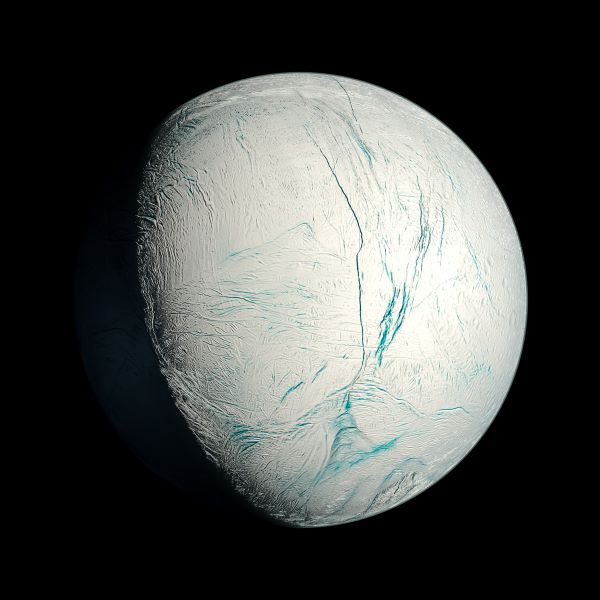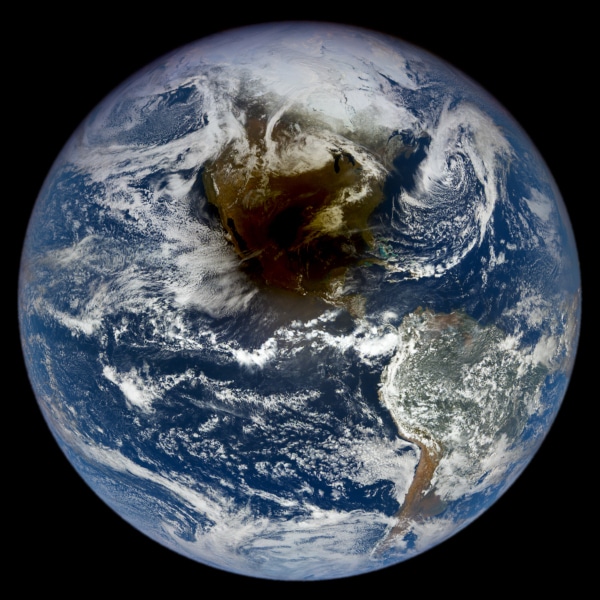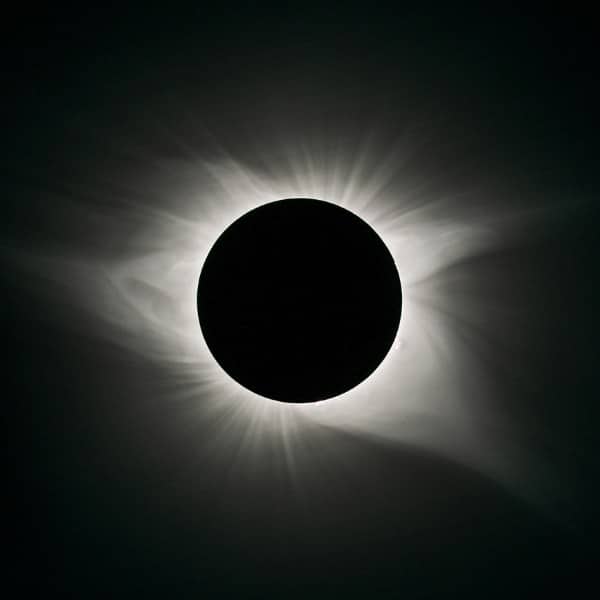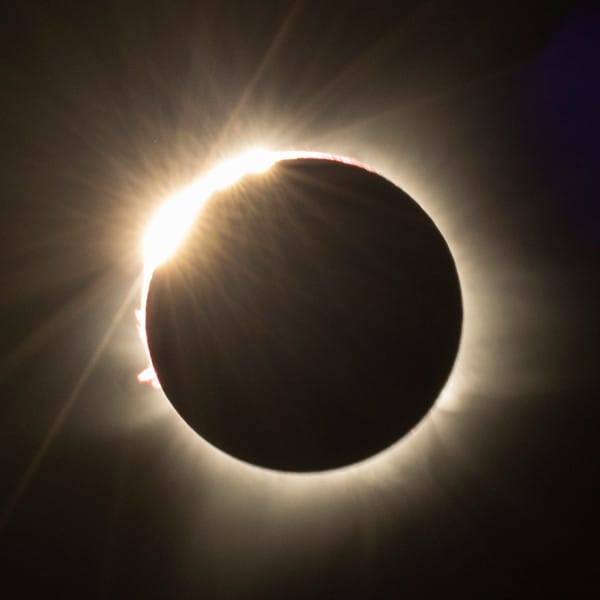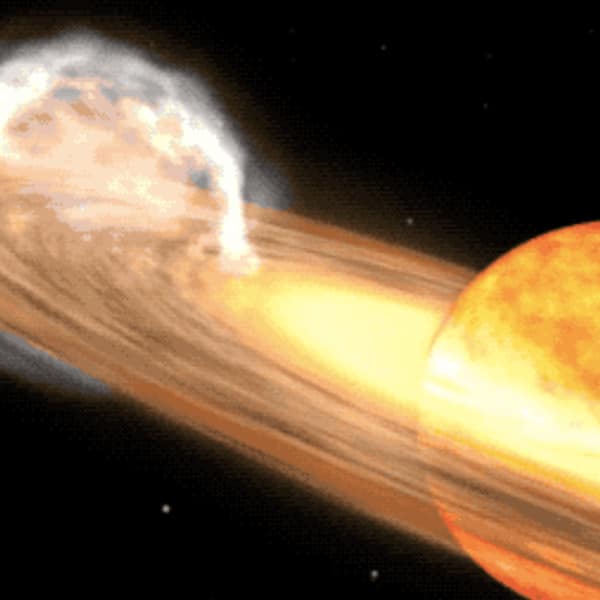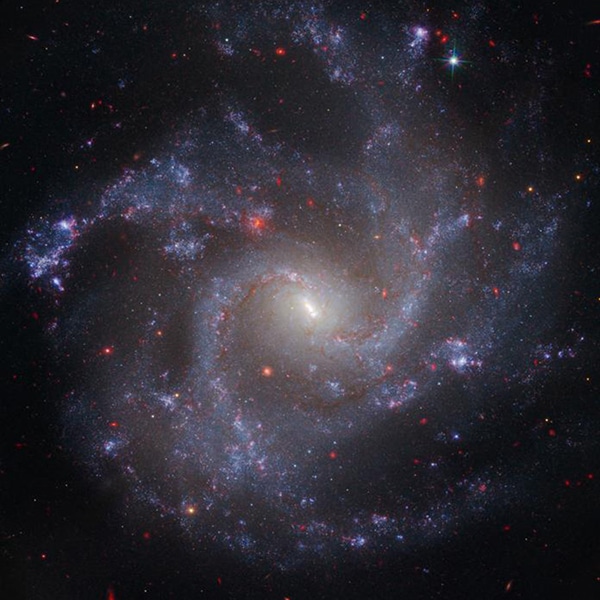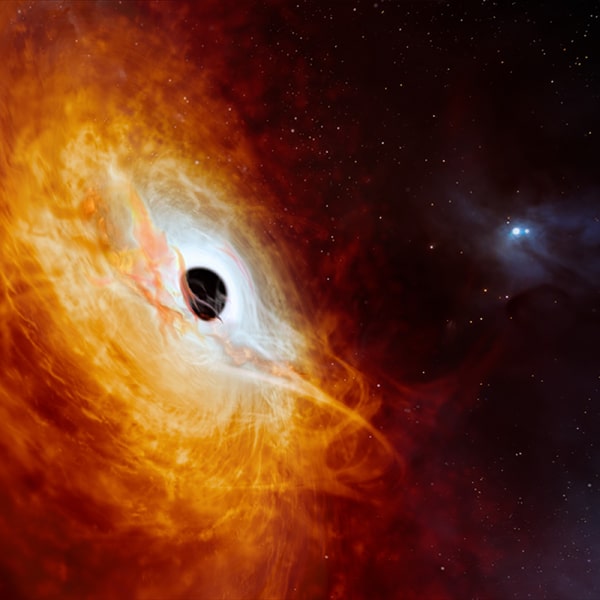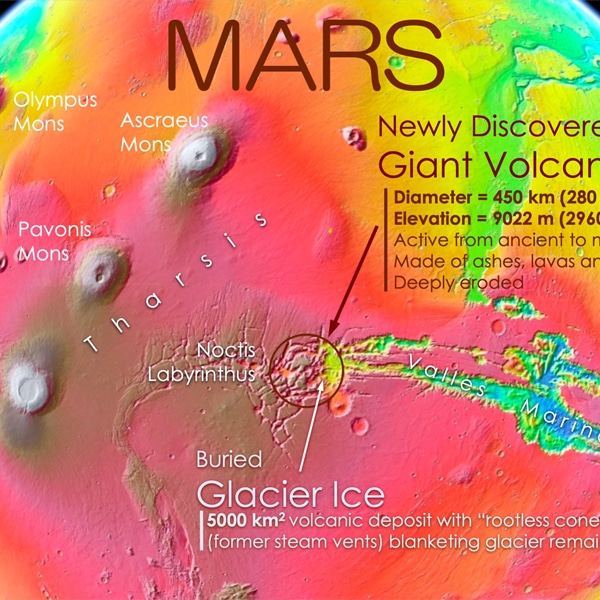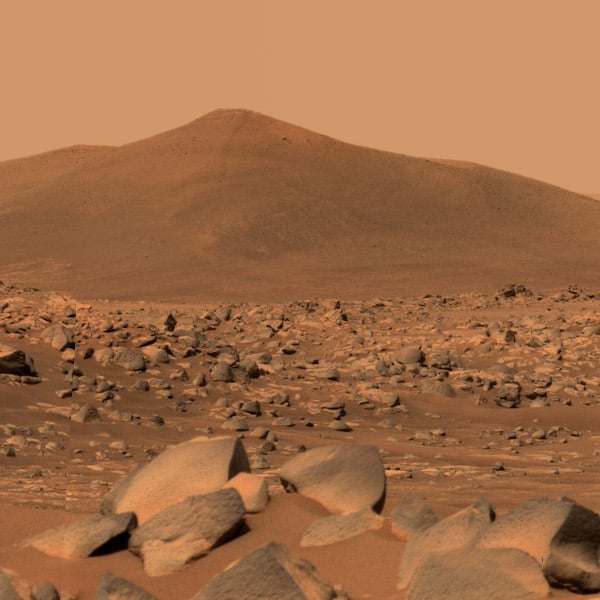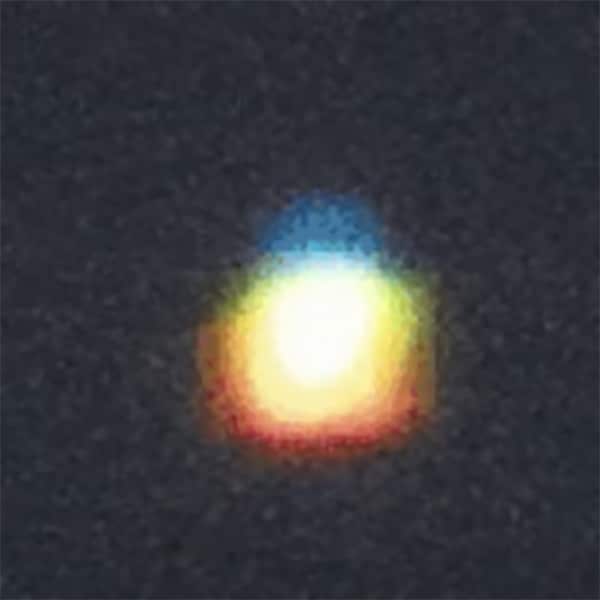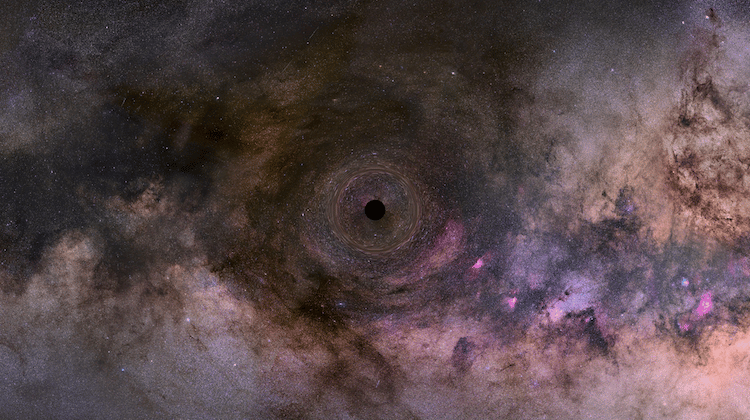
Concept illustration of wandering black hole. (Credit: FECYT, IAC)
Since it was first launched in 1990, the Hubble Space Telescope has shed light on many mysteries of our universe. And after more than 30 years, it continues to impress. Most recently, it discovered what astronomers believe is the first of its kind—a roving black hole left free to wander the galaxy.
Usually, black holes sit at the center of a galaxy or are paired with associated stars. However, the black hole that Hubble has spotted is going it alone and traveling 100,000 miles per hour around the Milky Way. Located 5,000 light-years away in the Carina-Sagittarius spiral arm of our galaxy, it's just one of 100 million estimated black holes that populate the Milky Way.
As NASA explains, black holes roaming our galaxy are born from rare, monstrous stars (less than one-thousandth of the galaxy's stellar population) that are at least 20 times more massive than our Sun. These stars explode as supernovae, and the remnant core is crushed by gravity into a black hole. Because the self-detonation is not perfectly symmetrical, the black hole may get a kick, and go careening through our galaxy like a blasted cannonball.
And while telescopes can't photograph black holes (since they don't emit light), they can image the starlight that gets warped when a black hole lines up behind it. By studying this warping of space, which is called gravitational microlensing, researchers were both able to identify and size the wandering black hole.
Two sets of studies looked at the data Hubble provided and estimated that the mass of the invisible compact object is between 1.6 and 4.4 times that of the Sun. At the high end of this range, the object would be a black hole; at the low end, it would be a neutron star, which is the collapsed core of a supergiant star. Either way, it's an exciting discovery.
“Detections of isolated black holes will provide new insights into the population of these objects in our Milky Way,” shared Kailash Sahu of the Space Telescope Science Institute in Baltimore, Maryland. Sahu led one of the two teams that analyzed Hubble's data, which was composed of six years of observations.
Six years of observations by the Hubble Space Telescope show a black hole wandering on its own through the Milky Way.
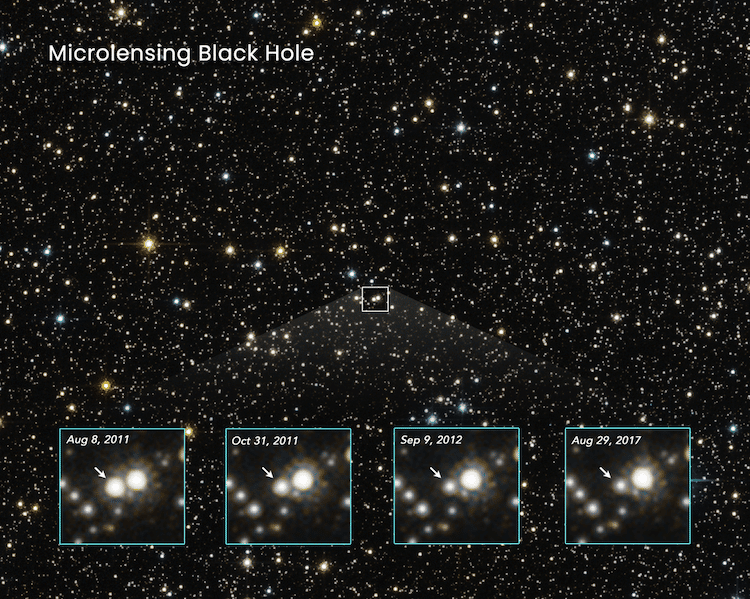
The star-filled sky in this Hubble Space Telescope photo is located in the direction of the galactic center. The brightness of stars are monitored to see if any change in apparent brightness is made by a foreground object drifting in front of them. The warping of space by the interloper would momentarily brighten the appearance of a background star, due to an effect called gravitational lensing. One such event is shown along with the four close-up frames at the bottom. The arrow points to a star that momentarily brightened, as first captured by Hubble beginning in August 2011. This was caused by a foreground black hole drifting in front of the star, along our line of sight. The star brightened and then subsequently faded back to its normal brightness as the black hole passed by. Because a black hole doesn't emit or reflect light, it cannot be directly observed. But its unique thumbprint on the fabric of space can be measured through these so-called microlensing events. Though an estimated 100 million isolated black holes roam our galaxy, finding the telltale signature of one is a needle-in-haystack search for Hubble astronomers.
(Photo: NASA, ESA, and Kailash Sahu (STScI); Image Processing: Joseph DePasquale (STScI))
In order to “see” and measure the black hole, researchers look at how it bends starlight.
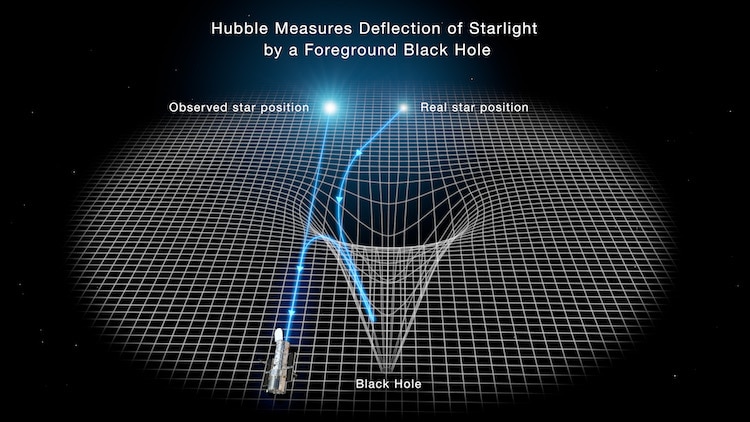
Illustration revealing how the gravity of a black hole warps space and bends the light of a distant star behind it. A black hole is the crushed remnant of a massive star that exploded as a supernova. The black hole traps light due to its intense gravitational field, hence it cannot be seen directly. The black hole distorts the space around it, which warps images of stars lined up almost directly behind it. This offers telltale evidence for the existence of lone black holes wandering our galaxy. The light from a background star is deflected and brightened by the black hole's intense gravitational field. The Hubble Space Telescope goes hunting for these black holes by looking for distortion in starlight as the black hole drifts in front of background stars.
(Photo: NASA, ESA, STScI, Joseph Olmsted)
Related Articles:
NASA Releases Hypnotic GIFs of a Black Hole in Rotation
Scientists Reveal First Photo of the Black Hole in the Center of Our Galaxy
Astronomers Successfully Image the Magnetic Field at the Edge of a Black Hole











































































